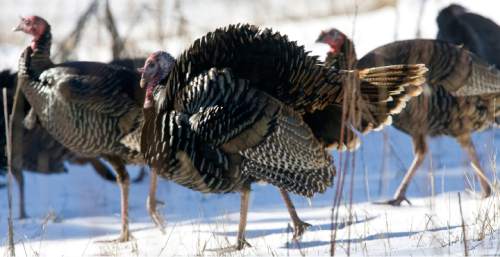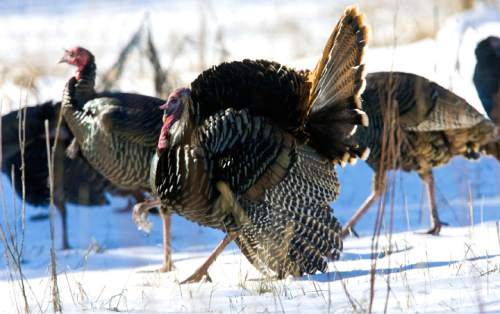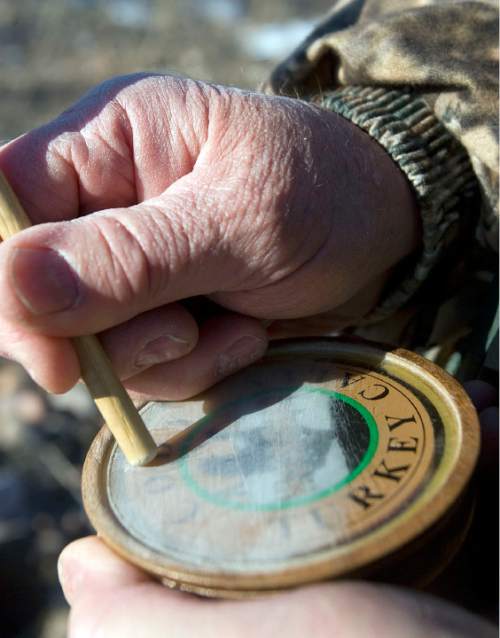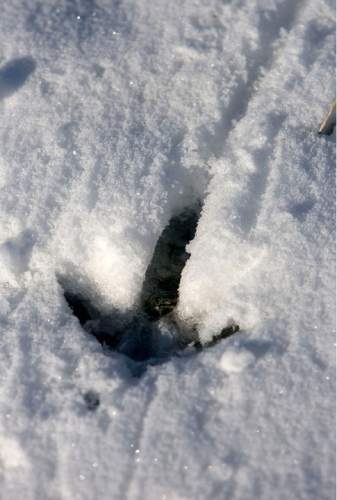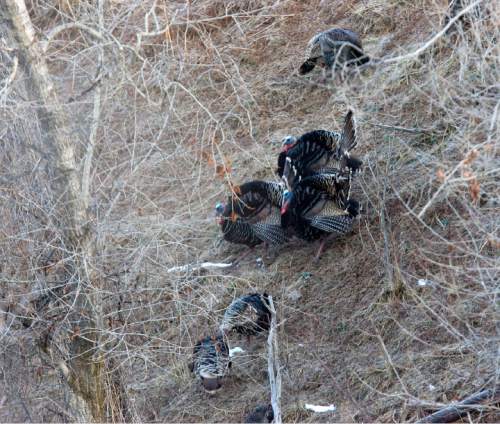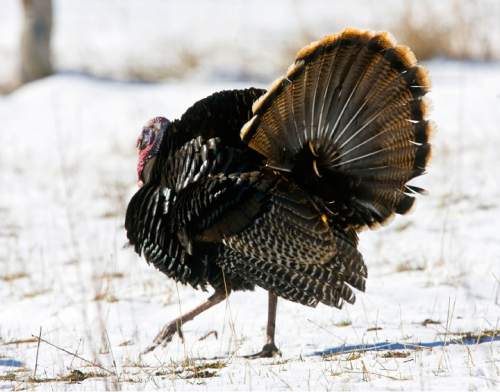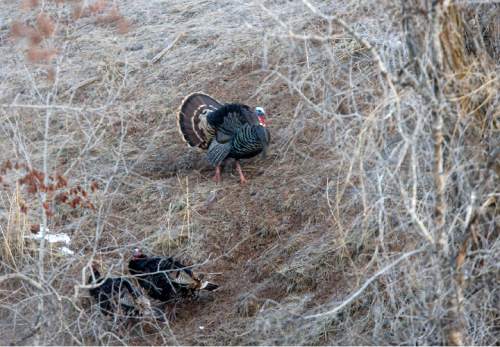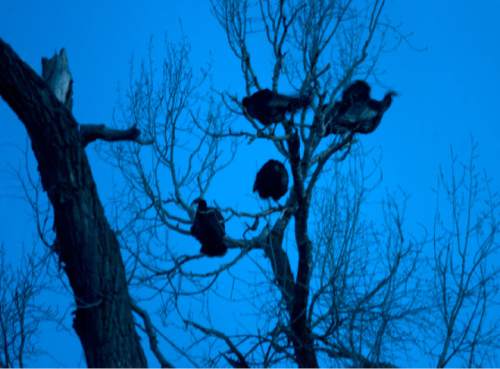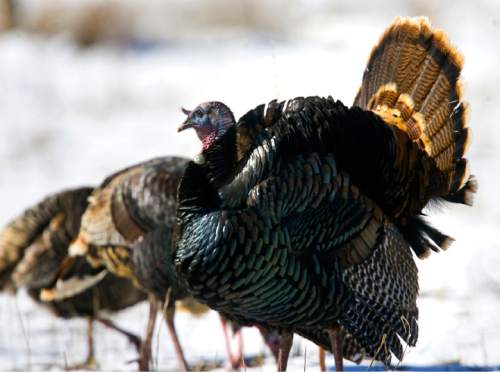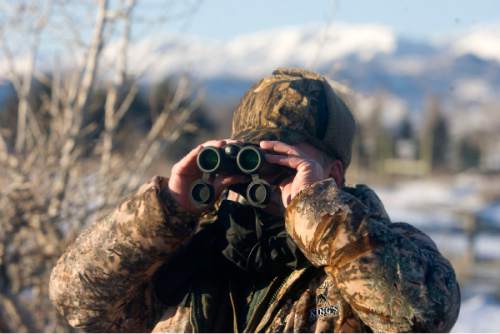This is an archived article that was published on sltrib.com in 2014, and information in the article may be outdated. It is provided only for personal research purposes and may not be reprinted.
For the first time in decades, some families will be sitting down to the ultimate locavore Thanksgiving feast: a fresh wild Utah turkey.
The state Division of Wildlife Resources this fall reopened a turkey hunt that went defunct 30 years ago due to dwindling bird numbers.
Utah's turkey population is doing quite well now — it's estimated at more than 20,000 — and 295 hunters were allowed to chase wild turkeys starting Nov. 1 in select areas of the northern and southern wildlife management regions of Utah.
"Areas with high concentrations of turkeys were picked for the fall hunts because it won't impact the population from growing," said Jason Robinson, upland game coordinator for the Utah Division of Wildlife Resources.
Utah's wild turkey population is a thing of legend and debate. Depending on who you ask, the bird may or may not have been a part of the state's landscape in centuries past.
Based on turkey bones, turkey pens and turkey rock art found near ruins of the ancient people of the area, Division of Wildlife Resources biologists believe the Merriam's subspecies is native to southeastern Utah.
But some believe turkeys may have been traded as a food resource and were not native to the area.
There was no recorded evidence of turkeys in the state when pioneers arrived.
Efforts to introduce the eastern wild turkey in the mid-1920s failed. In 1952, seven Merriam's turkeys from Colorado were released in the La Sal Mountains east of Moab.
The first Rio Grande turkeys hit Utah ground in 1984, when birds from Texas were released in the Pine Valley Mountains. DWR biologists began earnestly transplanting both subspecies, but mostly Rio Grande turkeys, in 1989.
Now there are so many turkeys in some parts of Utah that they are considered a nuisance. State lawmakers have gotten involved in some cases. Legislation last year would have allowed private landowners to kill birds that had damaged their property. After wildlife managers pushed back, the law was amended to allow property owners to ask for investigations and mitigation of damage to their land.
Utah's first legally sanctioned turkey hunt was in 1967. Hunters took to the field each spring and fall to chase the surprisingly wily game birds until 1984 when the second hunt of the year was eliminated.
Wild turkeys in Utah were struggling a bit then. And past hunts may have hindered the bird's survival in the state with hunters taking birds of either sex.
But wildlife managers believe Utah's wild turkey population is healthy enough now to withstand taking both "bearded," or male, and female birds in the fall.
"The turkey population is high enough that we will probably be able to have fall hunts in successive years," Robinson said. "We may need to add or delete permits as we go on, but it looks good going into the future."
The spring hunt, typically in April and May, allows hunting only male birds.
The fall hunt in the northern region runs through Dec. 31, while the southern region fall turkey hunt extends to Jan. 15, 2015.
Game managers warn that the birds are not the Butterball variety we're used to. Robinson said Thankgiving feasters should expect a wild bird that will not look, or taste, much like those that have been on the table in years past.
"I can guarantee there will be much less fat," Robinson said. "These birds are pretty trim. They aren't couch potatoes. They are really fit turkeys."
Twitter: @BrettPrettyman —
Wild turkey facts
There are two species • The Rio Grande and Merriam's. Although there is no conclusive proof, state wildlife officials believe the Merriam's is native to Utah. The Rio Grande is native to the south-central plains states and northeastern Mexico. They have been introduced in Utah.
Adult males • Average 17 to 21 pounds. Females go 8 to 11 pounds.
Name calling • Males are called toms, females hens, young males jakes and young females jennies.
Mating happens • In the spring. A clutch of 10-12 eggs is laid and hatching occurs 26 days later. Chicks are called poults.
First hunt • For wild turkeys was held in 1967.
Population • Officials estimate 20,000.
Source: Utah Division of Wildlife Resources.


